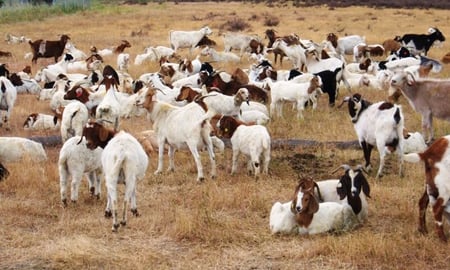 Ecologia
Ecologia  Commenti disabilitati su Sacchetti di plastica? MORTALI!!
Commenti disabilitati su Sacchetti di plastica? MORTALI!! Sacchetti di plastica? MORTALI!!
Nuova tassa sulle buste di plastica a Washington DC
Sacchetti di plastica
al bando
Dal prossimo anno in Europa saranno vietate le buste di plastica per la spesa, le cosiddette “shopper”. Negli Stati Uniti non vige ancora il divieto, ma hanno trovato un modo migliore per risolvere il problema: incidere su quello a cui gli americani tengono di più, il portafoglio.
Il governo della città di Washington DC, all’inizio di questo mese, imporrà una tassa di 5 centesimi per i sacchetti di plastica ai clienti dei supermercati. I funzionari della città prevedono di utilizzare il fatturato aumentando la lotta contro l’inquinamento di un fiume locale. Secondo i produttori dei sacchetti di plastica, che ovviamente non sono soddisfatti della nuova imposta, la decisione costerà alle famiglie di Washington “5 milioni di dollari nel 2010″. O, in altre parole, i residenti avranno 100 milioni di opportunità di scegliere un’alternativa eco-friendly ai sacchetti di plastica l’anno prossimo.
Ma la Capitale non è la prima città a scoraggiare le terribili “Plastic Bags”. La nuova tassa sui sacchetti, finalizzata ad eliminare gradualmente il prodotto, noto per essere una fonte comune di rifiuti per le discariche, è già nota a San Francisco, dove nel 2008 è stato vietato l’uso dei sacchetti di plastica in città, ed è stato ordinato che fossero sostituiti con materiali più eco-friendly, come la carta, anche se i sacchetti di tela riutilizzabili stanno guadagnando popolarità.
Ed ancora:
‘Addio ai sacchetti di plastica’San Francisco divisa sulla svolta ambientale
La città era stata la prima negli Usa a proibirne l’uso nei grandi supermercati. Ora il divieto potrebbe essere esteso a tutti i venditori al dettaglio
Tre anni fa San Francisco era stata la prima città americana a proibire l’uso dei sacchetti di plastica nei grandi supermercati e nei drugstore. Ora il divieto potrebbe essere esteso a tutti i venditori al dettaglio, incluse le librerie, i negozi di abbigliamento e di elettronica e i grandi magazzini. Il consigliere comunale Ross Mirkarimi, promotore della prima normativa “anti-sacchetti”, ha infatti presentato un nuovo progetto di legge che, se approvato, potrebbe far scomparire del tutto dalla città californiana le famigerate buste di polietilene.
Attualmente gli ipermercati e i drugstore della città, come Walgreens o Safeway, possono proporre solamente tre tipi di borse ai clienti: di carta riciclata, di bioplastica (ricavata in genere da amido di mais o di altri cereali) e borse riusabili di tela o di juta. Se la nuova proposta di Mirkarimi dovesse passare, questa politica sarebbe estesa a tutti gli esercizi commerciali, con poche eccezioni, previste per esempio per alcuni cibi. “Da quando la normativa anti-sacchetti è entrata in vigore nel 2007, circa 100 milioni di borse di plastica ogni anno sono state risparmiate alle discariche o agli inceneritori”, ha dichiarato Mark Westlund, portavoce del Dipartimento per l’Ambiente della città. “Ciò significa anche meno sacchetti che intasano gli scoli durante le piogge forti, sporcano le strade delle città o mettono in pericolo la fauna marina”.
“Le borse di plastica sono un chiaro esempio di un eccesso che è andato fuori controllo”, ha dichiarato il consigliere Mirkarimi. “Le persone non si rendono contro della composizione dei sacchetti o delle loro conseguenze. Ormai sono onnipresenti e tutti li accettano come un dato di fatto: nessuno si chiede più nulla”.
Ma c’è anche chi la pensa diversamente. Come Shari Jackson dell’American Plastics Council, l’associazione dei produttori di plastica. “La proposta di Mirkarimi potrebbe avere conseguenze non volute”, ha dichiarato Jackson. “Aumenterebbe in modo esponenziale l’uso delle borse di carta – che presentano anch’esse problemi di carattere ambientale – e porterebbe via il lavoro a migliaia di persone che producono le borse di plastica”. “I sacchetti non devono per forza essere gettati, ma possono essere riciclati e usati per produrre materiali da destinare alla coibentazione e alla copertura di edifici, alle recinzioni o ad altri prodotti”. Ma i sacchetti riciclati sono ancora troppo pochi e il processo è costoso, mentre, come ha fatto notare Wade Crowfoot, dell’Environmental Defense Fund (Fondo per la difesa dell’ambiente) “si potrebbero creare molti nuovi lavori producendo borse riutilizzabili”.
A non essere entusiasti sono i commercianti, anche se nessun gruppo si è ancora schierato apertamente contro la proposta. Jimmy Shamieh, della Arab American Grocers Association, che rappresenta circa 450 piccole drogherie a San Francisco, ha dichiarato al San Francisco Chronicle di essere “a favore delle iniziative ambientali della città”, anche se “per i piccoli dettaglianti i costi delle borse riutilizzabili sono ancora proibitivi”. Costi che finiscono poi per essere trasferiti ai clienti finali, già colpiti dalla crisi economica.
La proposta di Mirkarimi, una volta trasformata in legge, potrebbe diventare effettiva dal marzo del 2011.
Fonte: San Francisco Chronicle
| Fonti: blogecologia.it &: ilfattoquotidiano.it |

 Il celeberrimo motore di ricerca partecipa alla riduzione delle emissioni:
Il celeberrimo motore di ricerca partecipa alla riduzione delle emissioni:
